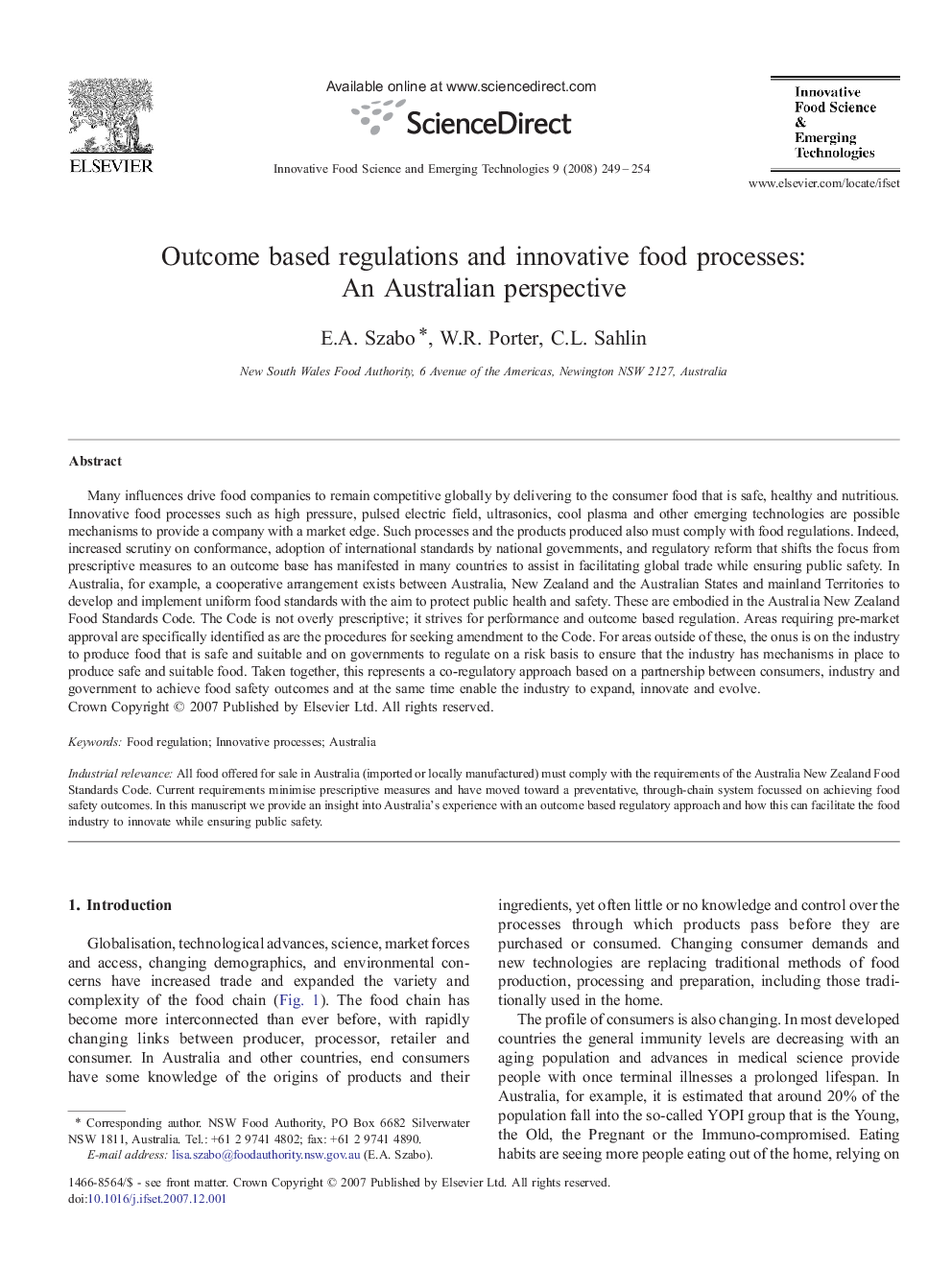| Article ID | Journal | Published Year | Pages | File Type |
|---|---|---|---|---|
| 2087380 | Innovative Food Science & Emerging Technologies | 2008 | 6 Pages |
Many influences drive food companies to remain competitive globally by delivering to the consumer food that is safe, healthy and nutritious. Innovative food processes such as high pressure, pulsed electric field, ultrasonics, cool plasma and other emerging technologies are possible mechanisms to provide a company with a market edge. Such processes and the products produced also must comply with food regulations. Indeed, increased scrutiny on conformance, adoption of international standards by national governments, and regulatory reform that shifts the focus from prescriptive measures to an outcome base has manifested in many countries to assist in facilitating global trade while ensuring public safety. In Australia, for example, a cooperative arrangement exists between Australia, New Zealand and the Australian States and mainland Territories to develop and implement uniform food standards with the aim to protect public health and safety. These are embodied in the Australia New Zealand Food Standards Code. The Code is not overly prescriptive; it strives for performance and outcome based regulation. Areas requiring pre-market approval are specifically identified as are the procedures for seeking amendment to the Code. For areas outside of these, the onus is on the industry to produce food that is safe and suitable and on governments to regulate on a risk basis to ensure that the industry has mechanisms in place to produce safe and suitable food. Taken together, this represents a co-regulatory approach based on a partnership between consumers, industry and government to achieve food safety outcomes and at the same time enable the industry to expand, innovate and evolve.Industrial relevanceAll food offered for sale in Australia (imported or locally manufactured) must comply with the requirements of the Australia New Zealand Food Standards Code. Current requirements minimise prescriptive measures and have moved toward a preventative, through-chain system focussed on achieving food safety outcomes. In this manuscript we provide an insight into Australia's experience with an outcome based regulatory approach and how this can facilitate the food industry to innovate while ensuring public safety.
